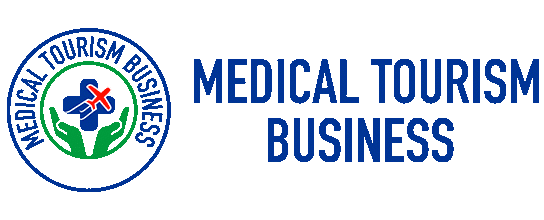

About Gilliam Elliott Jr
Gill is an expert on the topic of health tourism and specializes in working with medical tourism facilitators and international healthcare providers. Gill has experienced highly successful outcomes through strategic marketing initiatives. With broad cultural, interpersonal, and sales experience, his skill set, and passion has allowed him to develop and implement innovative programs and deliver favorable results. Each day he strives to contribute his expertise in health tourism and brand development to the overall benefit of the medical travel industry.
About Medical Tourism Business
To healthcare providers and medical tourism facilitators around the globe, we’re known as MedicalTourismBusiness.com, and the go-to people for medical tourism training and marketing solutions that help obtain and retain more international patients. To patients around the world, we’re better known as MakeMedicalTrip.com the most trusted source of free, personalized medical travel referrals.
Medical Travel Today (MTT): Who are the current and prospective clientele for your company?
Gilliam Elliott (GE): We are a membership-based organization so our members are made up of medical tourism facilitators, hospitals, clinics, and other stakeholders in the global healthcare industry.
MTT: What challenges has COVID-19 presented to your clients?
GE: Due to the pandemic a lot of people are afraid to travel and they are unsure about the exposure of getting certain medical operations. However, this is not the case for all individuals.
MTT: What is your vision for medical travel post COVID19– will it come back?
GE: MakeMedicalTrip.com has continuously received patient inquiries during the COVID-19 pandemic. Many patients around the world don’t have access to quality healthcare in their home country and during this crisis patients still have the need to obtain vital medical procedures. Especially treatments that can improve their quality of life, such as, heart operations, cancer treatments and certain orthopedic procedures. These things coupled with the economic uncertainty that is stemming from the pandemic is driving the need for patients to travel for affordable healthcare elsewhere.
There are several countries that have flattened the curve and are accepting medical travelers into their nation. However, due to COVID-19 we believe patients are going to be more influenced by medical tourism agencies and healthcare organizations who have certifications, even more so than before the pandemic. Patients are going to be more aware of trust symbols that reflect credibility and safety. Digital trust symbols such as certified logos and emblems on healthcare websites will be more important than ever.
MTT: What will be most popular treatments?
GE: We believe dental tourism and cosmetic surgery are going to remain extremely popular.
MTT: What countries or destinations will dominate?
GE: The countries that flatten the curve the swiftest will have the best chance of attracting the most medical tourists. Location and distance also play a large role in the countries that patients seek for healthcare, so it will be a multitude of factors that will ultimately dictate who emerges as the leading medical tourism destination.
MTT: What is the role of telehealth for medical travelers?
GE: Telehealth is a central component of medical travel. Telehealth contributes to an overall better patient experience because it allows the patient to visually see the physician and ask them questions before they fly abroad for medical care. Videoconferencing also allows the overseas doctor to perform pre- and post-operative exams, remotely. We always advocate for medical tourism agencies and healthcare organizations to set up videoconference calls between the patient and the overseas physician before the medical trip as well as after the patient returns to their home country.
MTT: What are the leading, preferred destinations?
GE: Location and proximity play a large role in the countries that international patients choose. For example: American and Canadian patients are more likely to travel to Latin American countries because they are neighboring countries. However, patients will travel longer distances for larger operations, if the cost of care is substantially cheaper. But generally speaking, the dominant players have been Thailand, Mexico, South Korea, Turkey, Brazil, India, and Colombia, just to name a few.